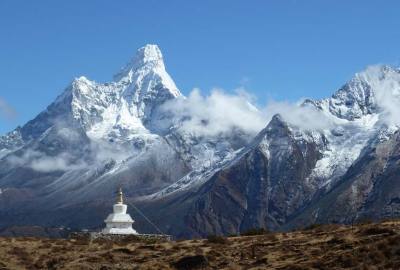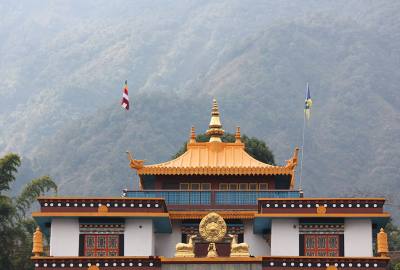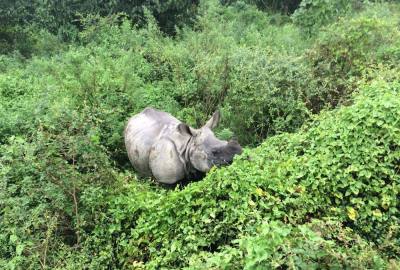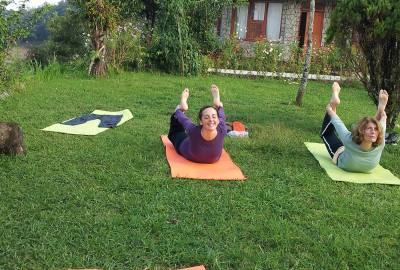- +977 9851160247(Puskal) [email protected]
- Kageshowari, Manohara Kathmandu, Nepal
Culturally and naturally rich and diverse country Nepal, situated in the rectangular shape as a landlocked Himalayan country in South Asia with the area of 141 thousand square kilometers and it is only 0.09% of the land area of the earth. From northern Himalayan range to southern Palin of Churia hill, contains the huge range of altitudinal range varying from 63 meters to 8848 meters, in between 193 km of width and 885km length. It’s boarder touches in north from Tibet (autonomous region China) and south, east and west from India, mostly divided into three geographical regions, Himalayan, hilly and Terai (plain) region.
Himalayan region
15% of the total area encompassed by the Himalayan region with about 6.73% of total population according to the census of 2011 used to accommodate but in decreasing ratio and lies in northern belt of the country and situated between the altitude 3000 meters to 8848 meters, mostly covers with high Himalayas. Similarly, it is also the hometown of 8 out of the existing 14 summits in the world which exceed the altitude of 8000 meters, including Mount Everest (8848 m), the highest mountain of our earth and rest of others are Kangchenjunga 8586 m, Lhotse (8516m), Makalu (8463m), Cho Oyo (8201 m), Dhaulagiri (8167 m), Manaslu(8163 m) and Annapurna (8091 m). Like other region, this region is also very rich in flora and Fauna. It is the habitat of some endangers species including snow leopard (300-400 in numbers) and red panda (200-300 in numbers). Here, in this region, we can find 1,624 species of medicinal herbs and aromatic plant, including Cordyceps sinensis (yarsagumba),Goji Berry (Lycium Barbarum) etc. but vegetation disappeared gradually as increase its altitude. The peoples of Himalayan region belongs mainly three ethnic groups, Bhotiya, Aryans and Mongoloids and their main occupation is agriculture, animal husbandry, collect and sell the different medicinal herbs but nowadays , more flourishing business is tourism. Himalayan region is one of the most stunning recreational regions because of the mighty Himalayas and its unique landscape. So, some natives people are the owner of lodges and they provides food and accommodation facilities for the visitors, some of them work as porter and carry luggage and also guide tourist to bring them to the destination also some of them are very expert and well-known mountaineer.
The hilly region
The hilly region situated in the central part of the country, spreading from Mechi River in the east and Makali Rivier in the west. Most of the area of this region covered with high hills and rocks but, some Valleys, gorge and Dunes of the Mahabharat, Siwalik and Churia ranges. The valleys of this region are very fertile and suitable climate so they ate popular settlements in Nepal. Among them Kathmandu valley with the capital city of the nation is mostly populated area of Nepal and other famous valleys are Pokhara, Dang, Surkhet etc. It’s altitude varies from 600meters to 3000 meters and occupied around 62 percentage of total land. It has ideal temperature mostly subtropical with wet monsoon, so the large numbers of flora and fauna concentrated here. Subtropical Mixed Evergreen Forest and Temperate Evergreen Forest are mostly found in this region. Also, it is a paradise for animals and birds, including some exotic animals like spotted leopard, barking deer, Himalayan black bear etc. Aryans, Bhotiya and Kirant are the main ethnic groups reside in this region.
Terai Region
TheTerai region is a plain and important region of Nepal, situated between 60 meters to 600 meters of altitude in the southern part , borded from India to foothills of Siwaliks, occupies about 23 % (Including inner Terai) of total area of the country. Because of the industrial and agricultural center of the country and also due to good infrastructure the population of this region is increasing day to day and now it becomes the most populated region with 50.27 % of the total population according to population census 2011. The main occupation of the people here is also agriculture but, they are also a good treader, make good business spreading all over the country also in India. Terai is known as the granary store of Nepal due to its plain terrace. Near to Kechanakawal from Jhapa in the east terai has the lowest altitude point of the country with an altitude of 63 meters . Because of tropical climate it is paradise for flora and fauna. It is the habitat of more than 600 species of bids and more than 5000 species of flowering plants. Also, it is the home for different endanger animals of the world including Royal Bangel Tiger and one horn rhinoceros. Tharu, Abadhai, Rajput, Yadav are some ethnic groups of terai and Maithali, Bhopuri and Tharu language is mostly spoken. Lumbin, the birth place of Buddha lies in this region.
The capital city Kathmandu
Culturally, Kathmandu valley itself describes its richness standing with uncountable temples, traditional monasteries and historical royal Palaces, churches and Mosque. It is one of the ideal places for religious tolerance. Although Hindus dominate the society, all the religious people live happily. Most remarkable and interesting fact of the city is consequently exists of Buddhism and Hinduism. Most of the temples of this valley are for both Hindus and Budhist. Muslims, originally from Kashmir came here for business propose but because of goodness of people of Kathmandu valley, they integrate and don’t want to lose the territory, that’s why since long, they used to live here peacefully in brotherhood and harmony. Christianity rise since last few years, also well accepted by the people of Nepal. Kathmandu lies almost central part of Nepal at the altitude of 2350m in hilly region.
As we already mentioned, Naturally, it is one of the gifted and small paradise, standing in a rectangular shape in south Asia with average 150 kilometers wide and 850km in lengths. But in between 150 kilometers we can find plain Terai Belt of average 150 meters altitude to high Himalaya terrains of 8848m altitude. It’s a mix lawn of over hundreds of ethnic groups and a similar number of linguistics. Nepali and English is the official language of Nepal . But in Kathmandu valley, Newari (Nepal Bhasa) is mostly spoken. Indo-Aryan, Tibeto-Burman languages are major language groups in the Himalayas and Hilly region, but in Terai, mostly Maithili, Awadhi and Bhojpuri are spoken. Nepal is rich in different festivals, like as Dashain, Tihar (Dipawali, the festival of light), Baishak Purnima (full moon day,birthday of Buddha), Christmas and Ide, Loshar(New year of Himalayan People) Indra Jatra, Gai Jatra are some major festival which are used to celebrate nation wide but other hundreds of local festivals also exist locally.
In Nepal we can find all major climate with immeasurably rich in flora and fauna. The avifauna of country is more than 900 species, of which two are common and 74 are rare or accidental. Thirty-two species are globally threatened.
There are 208 species of mammals listed, including four extinct species. Some remarkable mammals found in Nepal are the Bengal Tiger, clouded leopard, one horned rhinoceros, Asiatic Elephant, Indian Pangolin, red Panda, Snow leopard and Tibetan wolf. Also, several types of reptiles are native to the country, two endanger species of crocodile: the fish eating Gharial with the long narrow snout and the marsh mugger which is omnivorous (eating anything it can catch). A very successful breeding project has brought the Gharial back from extinction. Some of the snakes found in Nepal are: cobras, kraits, vipers such as pit viper, monitor lizard, Bengal monitor , the elongated, Sitana fusca, Cyrtodactylus, Japalura Tricarinata,the Annapurna ground sking, geckos etc.
Regions
-

Helicopter Tour in Nepal - 1 Package(s)
-

Trekking in Nepal - 9 Package(s)
Trekking is a kind of simple sport as in the form of multiple days of…
In details -

Tour in Nepal - 5 Package(s)
-

Jungle Safari in Nepal - 2 Package(s)
-

Mountain Flight - 1 Package(s)
-

Yoga Tour - 2 Package(s)

